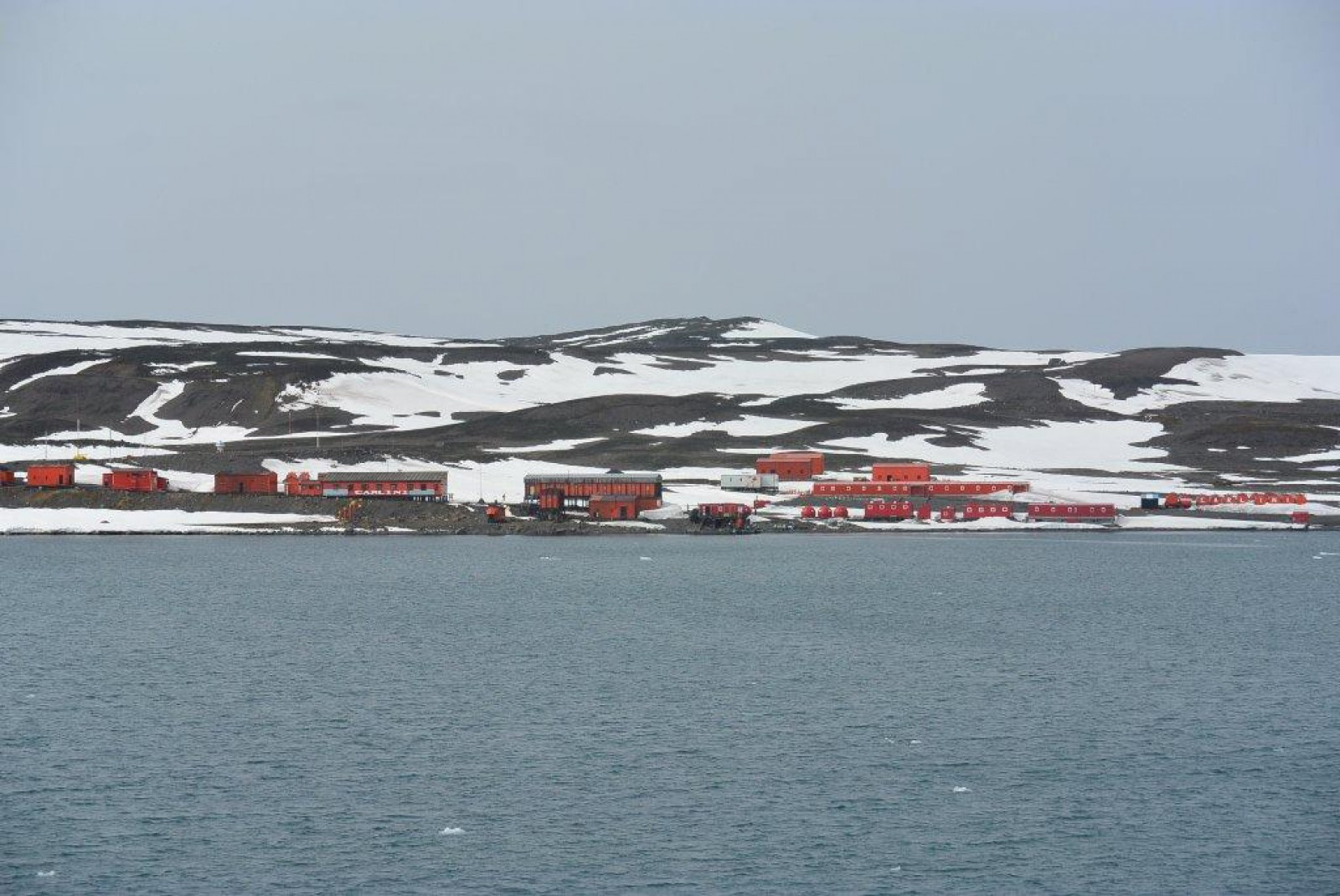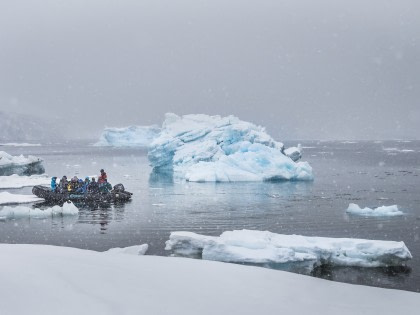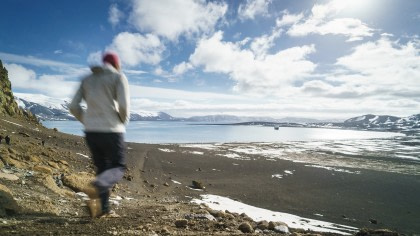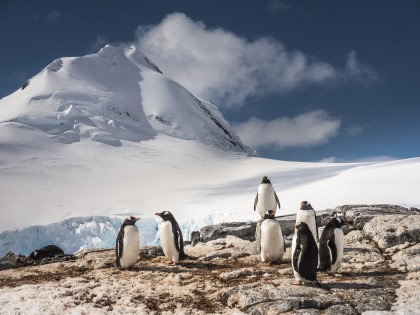Living the Antarctic dream
From October to March, during the Austral summer, thousands of breeding gentoo, Adèlie, and chinstrap penguins travel to the Western Antarctic Peninsula to rear their chicks and fatten up on krill before the brutal winter sets in. Along with the penguins come field biologists from across the globe, intent on studying these habits for conservation research. Studying these animals is one thing, but living in an Antarctic field station for the entirety of a breeding season is another. One field camp in particular, run by American scientists on King George Island, has mastered this Antarctic way of life, and has lived to tell the tale for over 30 years.
Copacabana: the field camp on the water
After sailing through the Drake Passage for three tumultuous days, it feels as though you’ve traveled as far south as you possibly can go. Soon, King George Island, one of the northernmost islands in the Western Antarctic Peninsula, comes into view. On the southern end of the island is Admiralty Bay, where a small, green research station stands like a beacon amongst a field of penguins. It was on this particular island in1985 that seabird biologists Wayne and Sue Trivelpiece, along with the National Science Foundation, and the United States Antarctic Program established a research station for the purpose of long-term penguin monitoring.
At the entrance to the station is a plaque commemorating the late Pieter J. Lenie. In 1976, his ship, the RV Hero, brought the first American scientific crew to the windy shores of Admiralty Bay. More recently, the camp has been referred to as Copacabana, named so for its location on a beach. Copa seems like more of a hut at first glance, and is definitely not equipped for human use during winter months.
Neighboring the Copacabana beach is, unsurprisingly, Ipanema beach. Although a far cry from the warm, sandy shores of Brazil, Copa boasts an excellent view of the water, unlimited whale watching opportunities, and a spectacular, and slightly odorous, view of the penguin colonies. After a week or so, it begins to feel like home.
Sleeping arrangements
The most commonly asked question about Copacabana is: “where does everyone sleep?” While not as spacious as other research stations, Copacabana has cultivated a very rustic and cozy atmosphere. With only three small buildings, sleeping arrangements can be a bit cramped at times. The main sleeping quarters contain two bunk beds, and just enough space for three people to sleep comfortably. An extra room is attached to the main hut, and has two beds that are reserved for visits from the project leader. The walls of the sleeping bunks are thin, but sturdy, and allow the calming sounds of waves hitting the shore and penguins quietly trumpeting to drift in at night.
Dining
Believe it or not, there is such a thing as fine dining in one of the most remote areas on Earth. Every bit of fresh food that ends up at Copa is purchased in Chile and packed away on a research vessel that crosses the Drake Passage to King George Island. There is only one resupply during the entire six-month season, so it’s important to make the very most of everything you have. Imagine living inside a grocery store where anything you could ever want to eat is only a few feet away from you. It can be a bit overwhelming at times!
The rules for camp meals are simple: each member of the crew is assigned a day of the week to cook dinner and to clean up afterwards. A few of the most-enjoyed meals of the season usually involve barbequing (yes, there is even a barbeque!) cuts of Chilean beef and lamb, fresh breads from the bread maker, and soups of all varieties.
Saturdays are reserved for trips across the glacier to visit Arctowski, and Sundays are celebrated with communal pizza making. Even ice cream is an option if you’re feeling adventurous enough, and there’s plenty of ice around to keep it frozen. If you’re going to live at the end of the world, you may as well enjoy yourself with good food!
Entertainment
One of the most shocking things people learn about living in Antarctica is that there is no cell phone service, nor is there any internet. But who needs Twitter or Facebook when you’re surrounded by glaciers calving, whales breeching, and thousands of penguins sliding down snow drifts on their bellies? Luxuries of a more civilized world become afterthoughts after a few weeks, and are replaced with activities like knitting, baking, and practicing songs on the camp’s 30-year-old guitar.
International relations: getting to know your neighbors
The closest “neighbor” to Copa is a Polish research station called Arctowski, named for the 19th century explorer and naturalist Henryk Arctowski. Unlike Copa, the station is occupied year round by six people who are fortunate enough to experience both winter and summer in Antarctica. American and Polish scientists have maintained a friendly relationship since the establishment of both camps, which is maintained by a visit from Copa to Arctowski every Saturday evening.
The only way to get from Copa to Arctowski, however, is to cross a glacier on foot with ropes and harnesses, or to paddle across a glacial moraine in an aluminum canoe. These visits give the crew an opportunity for a hot shower, a load of laundry, and a Polish dinner after a long week of work.
Beyond Arctowski are Peruvian station, Machu Pichu, and Brazilian station, Comandante Ferraz. Communication with the two stations is maintained with friendly radio banter and the occasional unannounced drop-in for lunch. On the opposite end of King George Island are a cluster of stations belonging to China, South Korea, Argentina, Chile, and Russia. It is truly an international community, one without borders, and all in the spirit of Antarctica.
When it’s time to go home
As the weather grows warmer and the days become shorter, time left on King George Island slowly comes to an end. As March approaches, it’s time to say one last goodbye to the penguins, who have now reared their chicks to maturity and are ready to migrate.
It takes about a week to properly disassemble and prepare the camp for winter. The windows must be properly shuttered to prevent snow from entering the hut, and all of the doors are nailed shut with wooden boards. The day before shipping out, the research vessel arrives, indicating the official end to the season. It’s no small task loading up six months of gear onto a ship, and usually requires some extra help from onboard.
After being around only three other people and a handful of Polish scientists for six months, mentally readjusting to the life you left behind is a difficult task, and can take some time. It’s never easy describing what it’s like to live in Antarctica, and thousands of photos will never do it justice. For the adventurous, an Antarctica trip is the experience of a lifetime, and an opportunity not to be missed.






